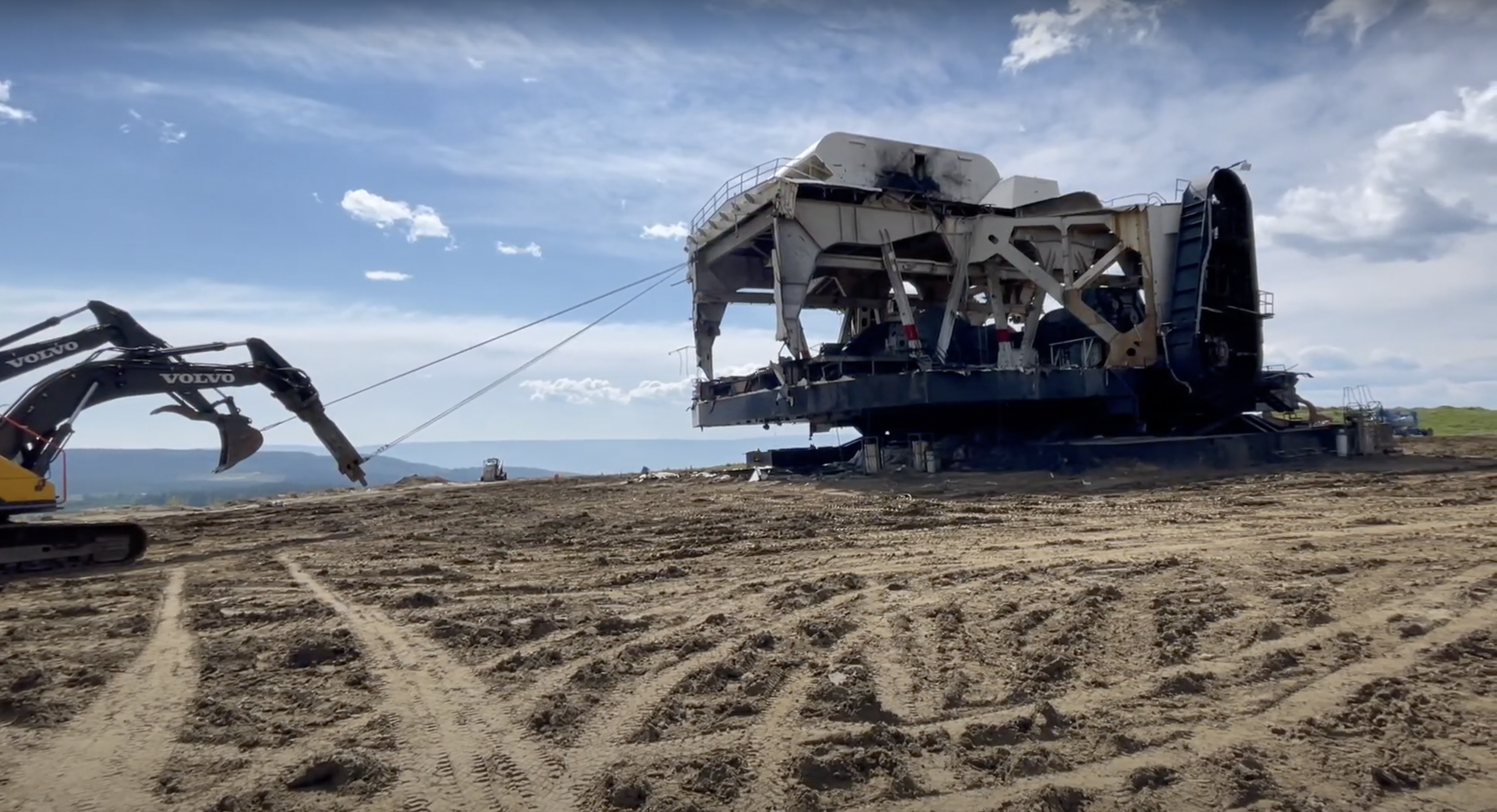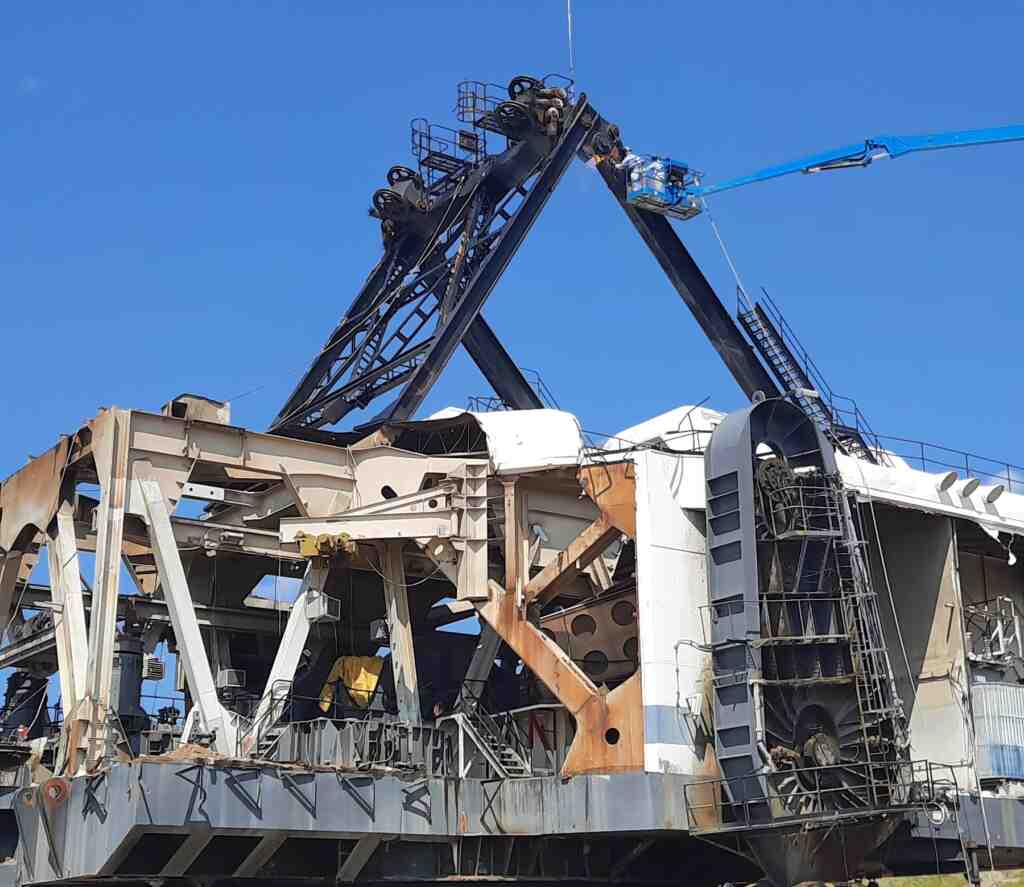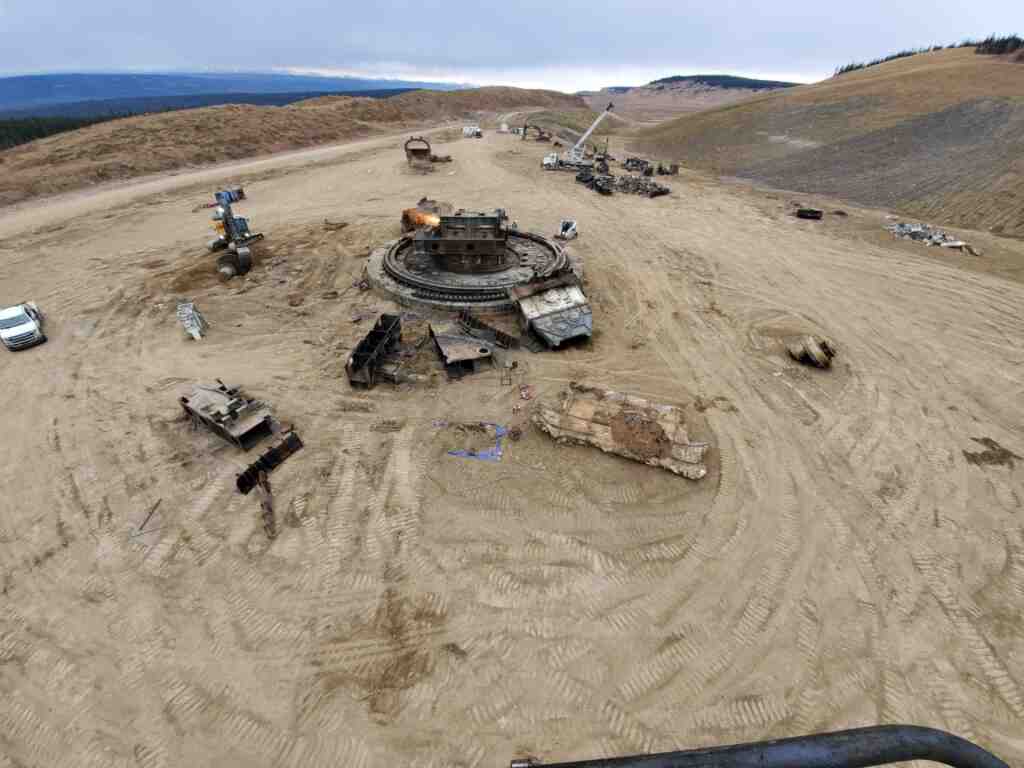
Demolishing heavy machinery like a dragline excavator is no small feat. These massive pieces of equipment are critical in civil engineering and surface mining, particularly in regions like Northern Alberta.
Richmond Steel’s Field Services Team, where over 50 years of experience in metal recycling meets demolition, recently took on the challenge of safely dismantling and recycling a dragline excavator. Here's how we did it.
A dragline excavator is a colossal machine used for digging and relocating massive amounts of material, mainly in mining. These machines can weigh up to 13,000 tons and stand as tall as a 20-story building, with booms that extend over 300 feet. For perspective, that’s roughly the equivalent of 10 school buses lined up end-to-end.
Their sheer size and complexity make it challenging to dismantle them safely. These machines are not easily relocated; they are often built on-site due to their weight and scale and need to be strategically dismantled at the end of their life.
When dealing with obsolete machinery like dragline excavators, there are several challenges:

A successful demolition relies on careful planning and preparation, evaluating every aspect of the project to ensure safety, efficiency, and maximum material recovery for our client.
The dragline’s 400 foot long boom was a major focus during the demolition. Blasting is sometimes used to bring down large structures like this, but it can leave the steel unstable, create safety risks, and slow down the process.
By carefully studying the dragline’s manual, our team found a built-in winch designed to lower the boom safely. After connecting local power, we were able to lower the boom in just three hours, avoiding the risks of blasting.
While using a crane was an alternative, it would have been far more costly for the client. A thorough evaluation allowed us to deliver a safe and cost-effective solution, saving the client significant expenses.
The dragline’s gears had accumulated a large amount of grease over the years, which posed a significant fire hazard during torch cutting.
To mitigate this, the team thoroughly steam-cleaned the machine before beginning the cutting process. Additionally, all hydraulic systems were purged, oil tanks pumped, and fire response systems decommissioned.
Asbestos tiles in the control cabin required removal prior to demolition. Moreover, the machine had become a nesting ground for barn swallows, which led to project delays during the nesting period to ensure compliance with environmental protections.
The site was secured with exclusion zones and safety barriers to protect workers and the surrounding areas, ensuring safety remained the top priority throughout the operation.
Hydraulic fluids, oils, grease, and other hazardous materials were carefully removed using specialized methods, ensuring no environmental contamination occurred.
The dragline was systematically deconstructed, piece by piece. The superstructure and walls were cut using an excavator-mounted shear, while the floor and base were torch cut, ensuring an efficient and controlled dismantling process.
Approximately 3,500 metric tons of ferrous material was recovered from the dragline. Non-ferrous materials and some resale components, such as motors and hydraulic parts, were also salvaged, maximizing the value recovered from the project.
Thanks to Richmond Steel’s proximity to a rail siding, materials were transported via truck to the nearby railcars and shipped to our mill in Seattle. All remaining hazardous materials were disposed of following strict environmental protocols.

Richmond Steel’s meticulous process ensured that no valuable recyclable metal was left behind.
Through careful sorting and recovery, the team maximized the amount of reusable and recyclable material, offsetting the overall costs of the project and ensuring clients receive the most value from their equipment’s end-of-life recycling.
Demolishing heavy machinery like dragline excavators requires experience, planning, and precision. Richmond Steel’s expertise in scrapping machinery and heavy equipment recycling ensures that every step—from planning to execution—maximizes safety and value recovery.If you have heavy equipment in need of safe, efficient demolition, contact Richmond Steel’s Demolition Team today for a quote and let our experienced team handle the process for you.